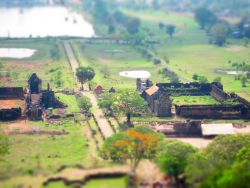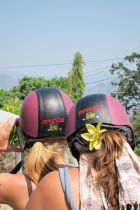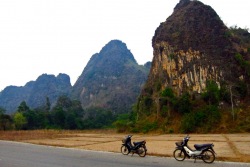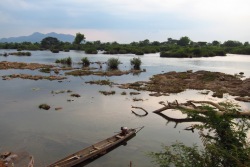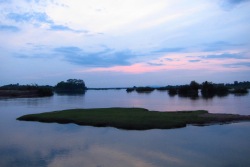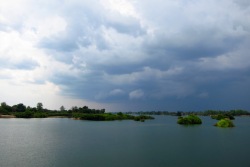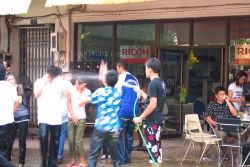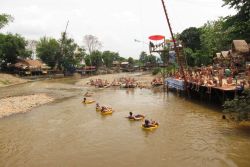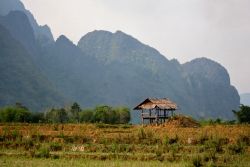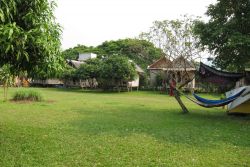Champusak, a small town in southern Laos, is surprisingly enough the nicest and tidiest town in Laos I have visited. A very nice place to spend one day/night it. More than that and it will undoubtedly become boring. The town is an one-street affair with nice-looking cared buildings. Step out from the main street and walk 100 meters and its idyllic Laos countryside with its mountains and rice-fields. Despite the simple geography we managed somehow to get lost and had to ask directions for the guesthouse. The biggest local attraction is of course Wat Phou Champusak. An ancient temple, dating to the same period as Angkor Wat. Not as massive as its Cambodian counterpart, but very impressive nonetheless. It is mostly ruins, but the beautiful surrounding nature compensates for the sorry state of the temple. There is an elephant stone with a small altar under the mango tree. Putting an unripe mango on the altar immediately resulted in a ripe mango falling down from the tree. Miracles do not end here, though. In the town we met an old lady selling delicious fish and banana cakes for dirt cheap among other delicacies I had never seen before. Having bought a few and realizing that they were delicious, we tried to buy some more 15 minutes later, but the lady was nowhere to be found. A true mirage.
Pakse, on the other hand, is incredibly boring. Nothing to do and nothing to see, but you will end up there anyway. It is one of those places that you end staying at anyway whether you like it or not. There are a couple of Indian restaurants serving decent food, though. Plus we made it to the cat party at a temple, while overseeing two scantily-clad ladies coming on a moped out of the temple. It is amazing how much insight into the local culture can come from just hanging around with cats. Oh, the incredible Pakse. The surroundings of Pakse are a whole different story. Bolaven Plateau with its cooler climate, scenic untouched nature, coffee and tea plantations is magnificent. There are plenty of “dreams come true” waterfalls with Tat Fan being the most prominent one. I thought I had seen some impressive waterfalls, but how wrong I was. This is THE waterfall, which trumps on all other waterfalls combined. Tat Fan alone is worth making a trip to Laos. Next on the agenda is two weeks of intense travelling in Southern Vietnam. Another chapter, another adventure.
